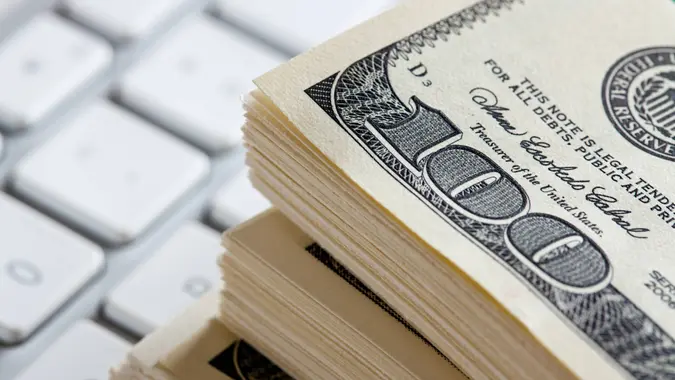4 Eye-Opening Signs You Should Be Making More Money at Your Side Gig

Commitment to Our Readers
GOBankingRates' editorial team is committed to bringing you unbiased reviews and information. We use data-driven methodologies to evaluate financial products and services - our reviews and ratings are not influenced by advertisers. You can read more about our editorial guidelines and our products and services review methodology.

20 Years
Helping You Live Richer

Reviewed
by Experts

Trusted by
Millions of Readers
People start side gigs for various reasons. Some do it because they want a hobby, others to test a business idea and many to make extra cash. However, some side gigs seem more promising in theory than they are in reality. You could start a side gig with the expectation of making a lot of money and find yourself not earning as much as you thought.
Here are some eye-opening signs that you should be making more money at your side gig.
You Have More Business Than Time
If the demand for your business is more than you can handle, it likely means your side gig is doing something right. Unfortunately, it also means you’re probably undervaluing yourself. As demand increases, it’s important that your pricing reflects that.
“To tackle the problem of underpricing, perform a thorough market analysis to understand the competitive landscape and customer willingness to pay,” said Victor Santoro, founder and CEO of Profit Leap. “For example, we implemented dynamic pricing strategies that adjusted our rates based on the demand and complexity of services offered, which significantly boosted our revenue.”
You’re Struggling Emotionally
Working so much can be emotionally draining. You might feel burnt out if you have a demanding full-time job and a time-intensive or emotionally intensive side gig.
If your side gig is causing emotional distress, it could result in lower profits. “Taking on too many projects or offering too broad a range of services can lead to burnout, reduced quality of work and, ultimately, lower earnings,” said Nicole Dunn, founder and CEO of Dunn Pellier Media.
But there are ways to resolve the issue. “To combat this, focus on narrowing down your offerings to those that align with your expertise and interests, and where there is demand in the market. Prioritize projects that offer the highest return on investment in terms of time and effort, and consider raising your rates to reflect the value you provide,” Dunn said.
You’re Having To Sacrifice in Other Areas
Like most work, side gigs can require some sacrifices. For example, you may not have as much time to see friends, relax or explore other hobbies. “Many side hustlers struggle to balance their primary job, personal commitments and their side hustle effectively,” said Max Williams, founder and CEO of HeroBot.
Not finding the right balance with your time can ultimately result in less earnings from your side gig. “If you find yourself constantly stretched thin and unable to dedicate sufficient time to your side hustle, it’s likely that your earnings will suffer as a result,” Williams explained.
“Assess your schedule and identify pockets of time that you can dedicate to your side hustle. Set specific hours for working on your business and treat it with the same level of importance as your primary job,” Williams said.
Your Profits Are Stagnant
Ideally, your income should be increasing over time. Whether from increasing your rates, growing your sales volume or expanding your business to new areas, the goal is to make more money. If you’ve been at this for a while and haven’t increased your profits, that’s a sign you’re not charging enough.
“One common issue I see is people not properly valuing their own time and talents,” said Finn Wheatley, a financial expert and risk analyst at The Small Business Blog. “If you’re putting a lot of effort into something, you deserve fair pay. Don’t be afraid to gradually raise your prices as you get better at what you do. Nobody likes spending hours on a project and feeling like they lost money.”
More From GOBankingRates
- Nearly 1 in 3 Americans Hit by a Costly Holiday Scam, Norton Survey Shows -- How To Avoid This
- Here's What Retirees Wasted the Most Money On in 2025 -- and How To Avoid It in 2026
- How Middle-Class Earners Are Quietly Becoming Millionaires -- and How You Can, Too
- 6 Safe Accounts Proven to Grow Your Money Up to 13x Faster
 Written by
Written by  Edited by
Edited by 

























